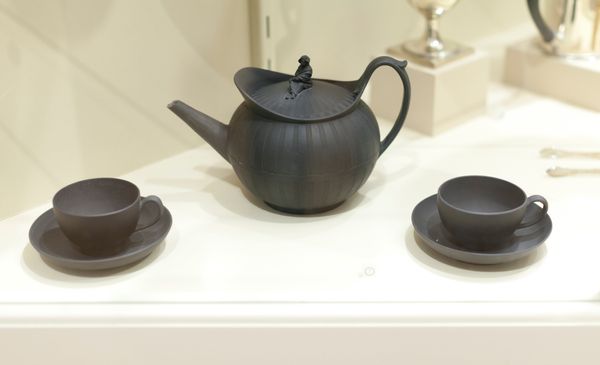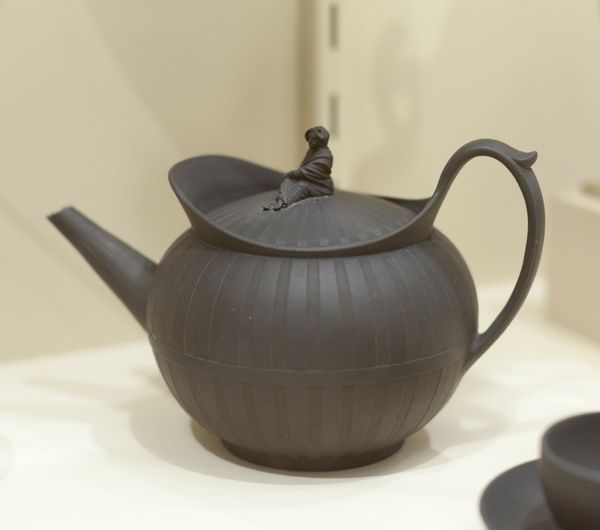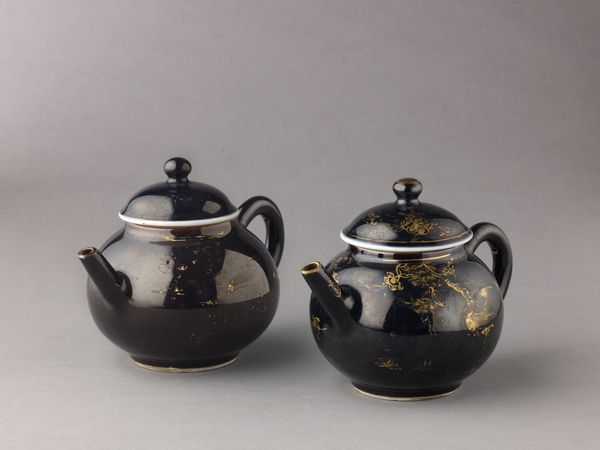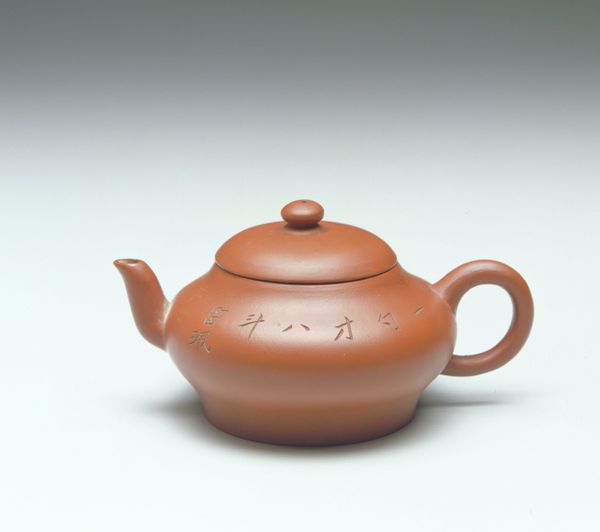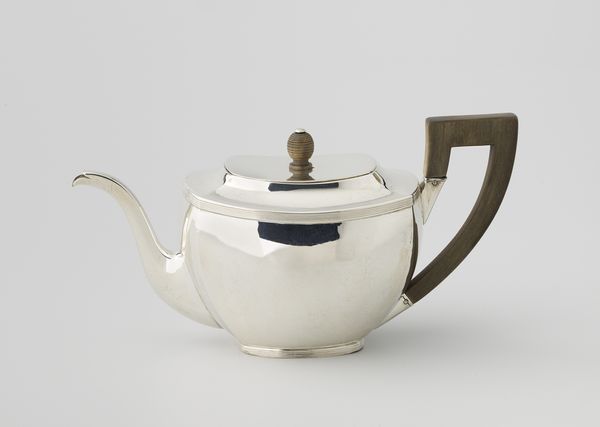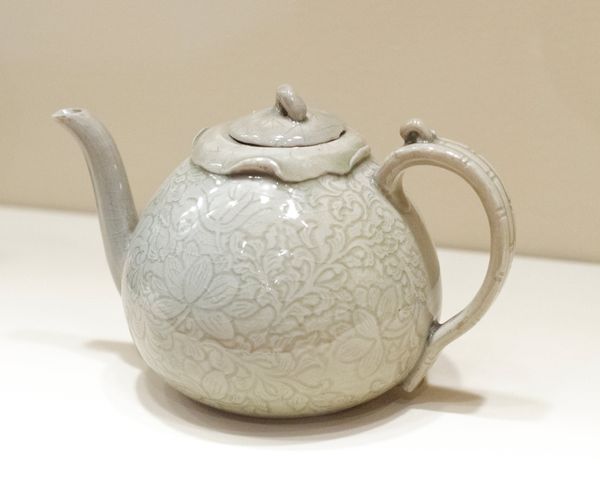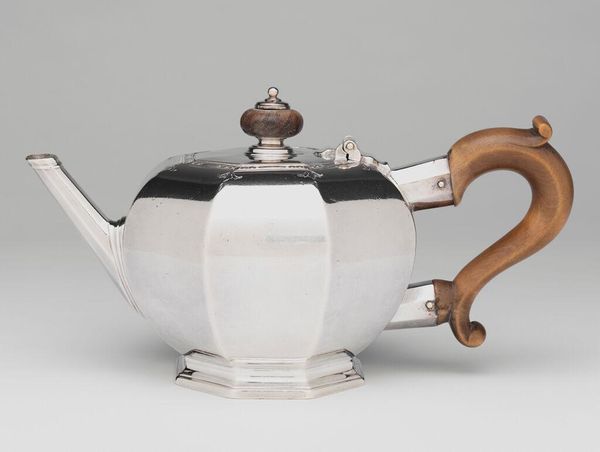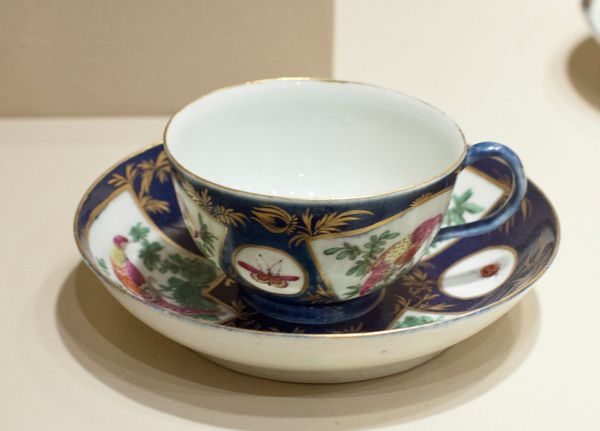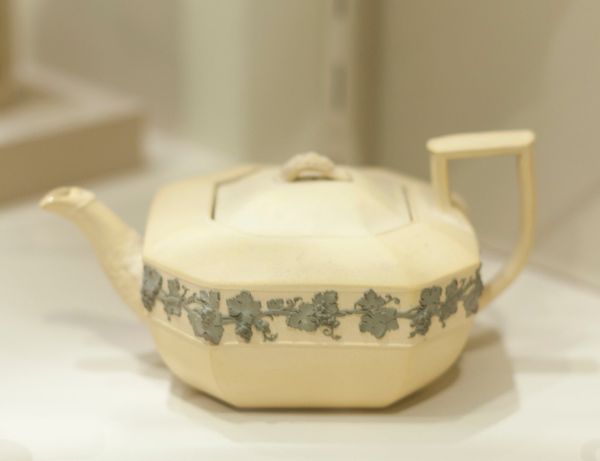
ceramic
#
neoclacissism
#
ceramic
#
england
#
decorative-art
Dimensions: 2 1/4 x 5 1/8 in. (5.7 x 13.02 cm)
Copyright: Public Domain
Curator: Here we have an exquisite ceramic creation from the late 18th century, around 1780, titled "Cup and Saucer." It’s attributed to the Wedgwood manufactory in England. Editor: I'm immediately struck by the matte, almost solemn quality of the material. It has a sculptural simplicity. Curator: Indeed. The black basalt ware speaks volumes, doesn't it? Wedgwood famously emulated ancient Roman and Greek pottery, a pursuit deeply rooted in Neoclassical aesthetics. These forms became fashionable amongst upper and middle class homes, often becoming a statement of education, erudition, and belonging. Think about what drinking tea signified then. It was both deeply intimate, personal and a site of public spectacle and social performances that included the ongoing colonial project. Editor: That somber tonality—that is typical of the Neoclassical. There's such a quiet confidence, or perhaps even a sense of restraint in it. The fine vertical ribs circling the items introduce subtle modulations across the expanse. There are multiple layers of shapes--circular, oval and curving cylindrical all combine to give each object great structure. Curator: Absolutely, the form is so integral. Wedgwood wanted his ware to be accessible, and also durable in contrast with more delicate Chinese imports, hence basalt's appeal. The dark color also has roots in antiquity: pottery excavated from Pompeii influenced his aesthetic choices. Remember too, that enslaved labor and colonial trade networks fueled Britain's tea consumption and production of items like this—luxuries often concealing violent histories. Editor: Knowing this backstory invites an important dimension to experiencing the visual. Curator: Yes, and one can't uncouple these ceramic objects from broader cultural dynamics that determined how gender, race, class, and nationhood played out in the Georgian era. It becomes something more complex than merely 'decorative art.' Editor: Yes, from a formalist perspective, the piece might at first appear as a purely aesthetic exercise. Curator: It's much more than this, these material items encapsulate a microcosm of history. They reflect and inform how we interpret our present. Editor: Understanding those tensions truly enriches the act of seeing. Curator: Precisely.
Comments
minneapolisinstituteofart almost 2 years ago
⋮
Around 1768, Josiah Wedgwood perfected a black stoneware ceramic that he called black basalt, after a type of hard black volcanic rock that forms when lava cools. Black basalt was used for Wedgwood’s first strictly ornamental pieces, such as busts, plaques, and vases, and eventually also for functional domestic objects like this teapot, cup, and saucer.
Join the conversation
Join millions of artists and users on Artera today and experience the ultimate creative platform.
